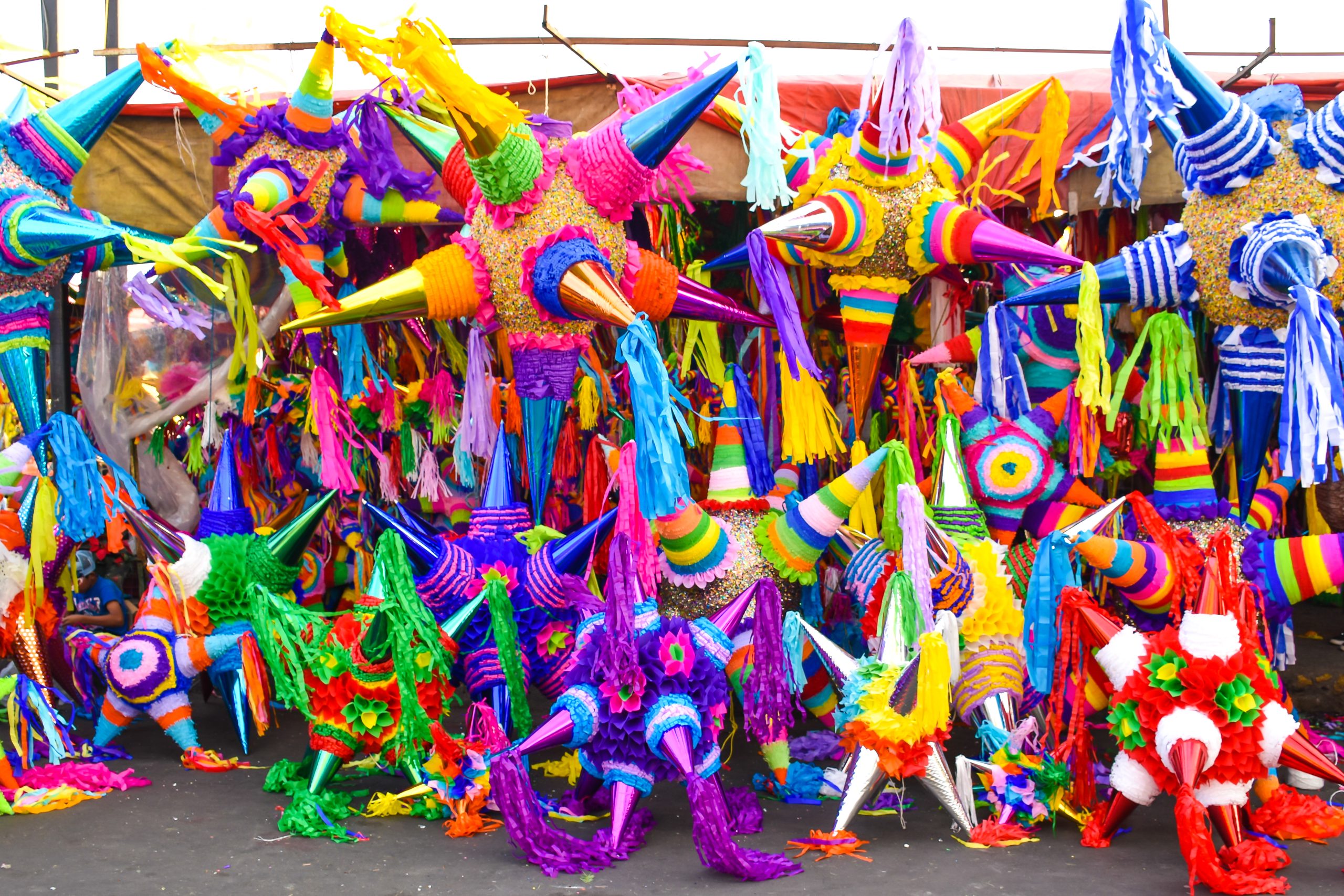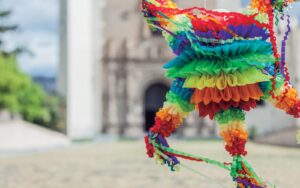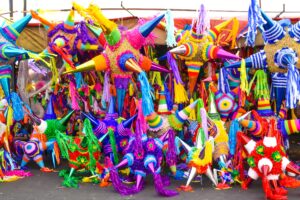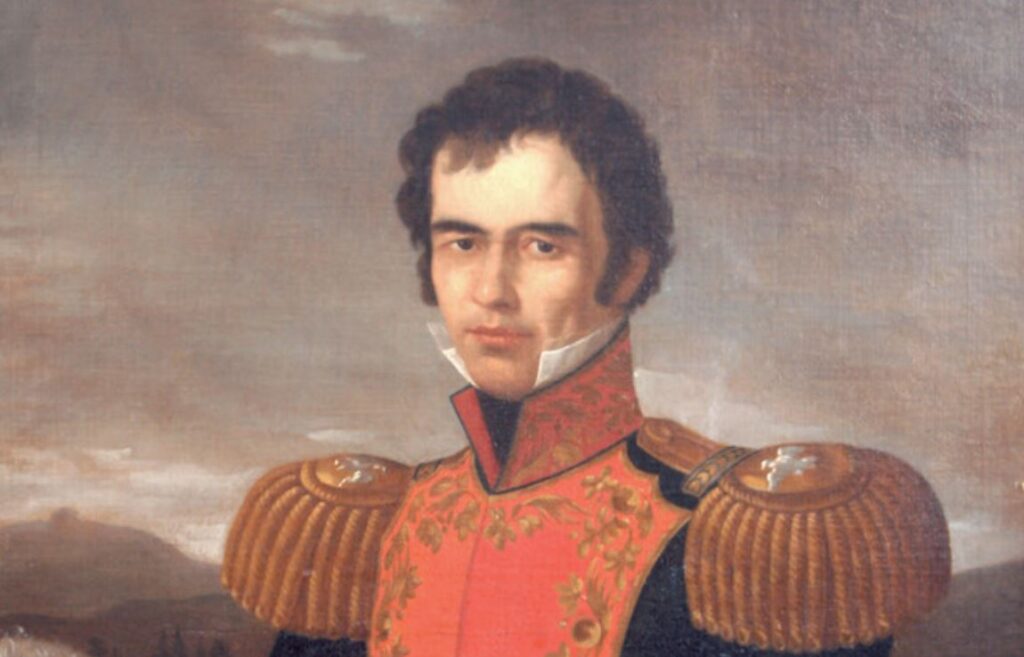The Rich Tradition of Piñatas in Mexico: History, Origin, and Significance

Piñatas in Mexico are a representation of the most deeply rooted culture in this country; and it is without a doubt, a common place in Mexican celebrations.
From the most humble homes to the biggest collective parties, piñatas are a must in Mexico.
They signify the color, joy and folklore of a nation; it is a tradition, in fact, that has its antecedents in pre-Hispanic celebrations.
More precisely, however, piñatas in Mexico have their origin in the former convent of San Agustin, in Acolman, State of Mexico.
In that place, more than 400 years ago, the first piñata was made in Mexico, or at least, as we know it today, although with some variations as size and figure.
The most classic piñatas in Mexico are in the shape of flowers, ships and stars, although it is said that the piñata should be in the shape of a star with seven peaks, each peak symbolizing a capital sin, the candies or fruits that come out of it when it is broken, symbolize the blessings received by all those who participate.
Therefore, the cultural significance of piñatas transcends a particular holiday or celebration, it is the best symbol of the union of different races.

Historical background of piñatas in Mexico
For one sector of historians, piñatas originated in China, where records show that the Italian explorer Marco Polo observed figures of cows, oxen and buffaloes covered with colored paper to celebrate the Chinese New Year.
These figures were documented when people would forcefully beat these shapes with sticks of various colors until seeds came out of these “Chinese piñatas.”
For this reason, Marco Polo has been considered as the person who brought this tradition to Italy.
When piñatas arrived in Europe in the 14th century, they were adapted to the celebration of Lent.
The first Sunday became “Piñata Sunday”. In Italy, the word “pignatta” means “fragile pot”.
This tradition later reached Spain, where the first Sunday of Lent was called “Danza de la Piñata”.
In Spain a clay pot was used and decorated with ribbons and fringed paper was added and wrapped around the pot.
And so, from Spain came the piñatas in Mexico, with the Latin and Mexican touch.

Pre-Hispanic tradition of piñatas in Mexico
But, according to some historians, the tradition of piñatas in Mexico originated from the ancient Mayas and Aztecs.
Among these peoples they played a game that consisted of breaking a clay pot that was swung by means of a rope, blindfolded.
These clay pots were placed on a pole in the temple, which was sometimes filled with grains or fruits that represented abundance or favors granted by the god.
READ HERE: PLEASANT MEXICO DAILY LIFE
Upon the arrival of the Spanish in Mexico, the missionaries also brought the European version of the piñata which was used to attract the natives to their Catholic ceremonies.
The tradition of piñatas in Mexico arrived in the year 1586 (16th century), when the Augustinian friars of Acolman de Nezahualcóyotl, in the current state of Mexico, near the archaeological zone of Teotihuacán, received authorization from Pope Sixtus V to celebrate the “misas de aguinaldo”, which would later become the posadas.
Symbolism and modern practices
In pre-Hispanic times and even with the arrival of the Spaniards, the first piñatas in Mexico were made of clay vases.
On the outside they were decorated with paper of different colors, and had 7 peaks, which, for religious purposes, was to break with the sins of man.
Today piñatas in Mexico cover a huge sector in the area of celebrations, and are made with cardboard and covered with Chinese paper.
The shapes are now varied, according to the celebration of the moment; for many, piñatas are the center of the party and mark the expected climax of the celebration.
The ways to break the piñata are varied, usually with a stick.
But, for example, in Yucatan a stick is not used, but the piñata is hit directly with the fists.
Beyond the religious meaning, there is a value of unity and joy that links the family, societies and people of Mexico.
How are piñatas made and filled in Mexico?
In the beginning, piñatas were filled with fruits and candies; a tradition that has been maintained through the years.
Nowadays, candies and toys are added; but in some places, fruits are added to the piñatas in Mexico.
The original filling of piñatas in Mexico is with seasonal fruit and some sweets known as colación.
During the Christmas posadas in Mexico, the piñata is filled with a variety of fillings.
Therefore, you will see candies, Christmas decoration items, toys and pet treats, among other details according to the creativity of the party organizers.
Piñata celebrations in Mexico:
Christmas piñatas in Mexico have a greater presence during December, above all, because of the Christmas posadas, a celebration we have mentioned.
Every December, the roofs of the country’s markets are painted with all kinds of colors of these objects, now a great symbol of Mexican culture.
One example is the Piñata Fair in Acolman where year after year hundreds of artisans gather to honor the tradition of almost 500 years and not the action figures with the slogan “don’t break the tradition… break a piñata”.
During the Christmas holidays, especially during the posadas, the piñata is filled with candies, peanuts and seasonal fruits: oranges, limes, tangerines, tejocotes, jicamas, canes and others.
Before breaking the piñata, children used to sing: “No quiero oro / ni quiero plata / yo lo que quiero es romper la piñata” (I don’t want gold / nor do I want silver / what I want is to break the piñata), however this tradition is almost obsolete nowadays.
READ MORE: FOODS THAT ORIGINATED IN MEXICO
But nowadays, we can see piñatas being sold for May 5th or September 19th, dates with great historical value in Mexico.
In fact, in the United States, we can observe the tradition of seeing Mexican piñatas with the Cinco de Mayo celebrations.
The piñata in Mexico is part of the celebration, and is a good excuse to unite people, despite the differences that may exist at a time, so the culture unites people.






